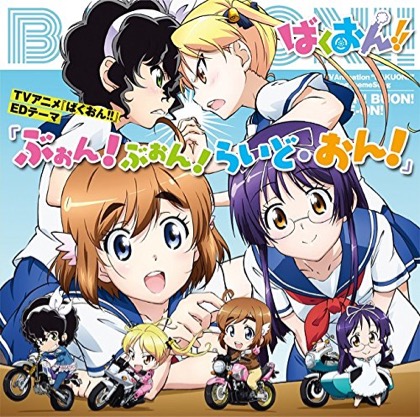Anime
Konosuba OVA
There’s a sub out for the Konosuba special that was bundled with the latest light novel, and it’s mostly worthless. They didn’t want to steal material from the upcoming second season, so it’s just a standalone bit of fluff that doesn’t really deliver on its promises. The only thing I can really praise is one quiet scene towards the end that gives Megumin some character development.
Just add waifu
Available at J-List. Not available: exhibitionistic motorcycle-riding alien catgirl goddess. Good luck sourcing that component.

Rin's Toaster

Lime-senpai sings!
The CD single of the Bakuon end-credits song includes several extras, including the “Lime-senpai” version.

They just layered riding noises over the instrumental version.
Sexual Healing meme
I’ve been seeing a lot of captioned anime pictures recently with two speech bubbles added, reading 大丈夫? おっぱい揉む? (“Are you okay? Wanna squeeze my titties?”). The templates (NSFW) work surprisingly well on a wide variety of cheesecake images, 2D and 3D, and then of course it had to get weird…
Bakuon OP, 3D version
I generally don’t like the bleached-blonde look on Asian women, but it works for Sayaka Sasaki.
…and since she’s turning 34 soon, I don’t even have to feel guilty about ogling!
Coordinated Lime Cosplay

(via)
[Update: the Amazon Japan Bakuon!! Store, which not only includes anime/manga merchandise, but also the actual helmets the girls wear, parts for their bikes, toolkits, etc.]

